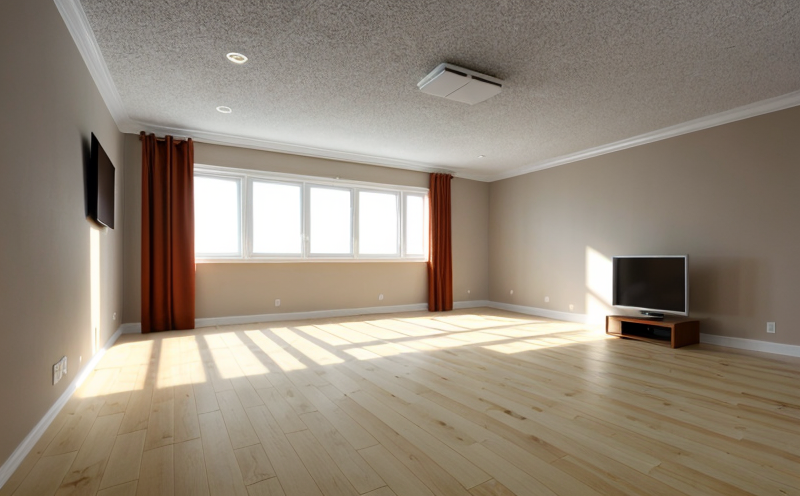EN 12354-6 Building Acoustics Sound Absorption Prediction
The EN 12354 series provides a comprehensive framework for the design, construction, and assessment of building acoustics. Specifically, part 6, "Sound Absorption Characteristics," focuses on predicting sound absorption coefficients in buildings using mathematical models and laboratory testing.
This service addresses the need to ensure that new constructions or renovations meet the required acoustic standards for reducing noise pollution, enhancing speech clarity, and achieving comfort levels within enclosed spaces. The standard aims at providing a consistent method of assessing sound absorption through controlled measurements and calculations based on material properties.
The process involves several key steps:
- Selection of appropriate test materials
- Preparation and mounting of samples according to specified dimensions
- Conducting reverberation chamber tests in accordance with ISO 140-3 or similar standards
- Calculating the sound absorption coefficient using predefined formulas outlined in EN 12354-6
The results are critical for architects, acoustic consultants, and construction professionals who rely on accurate predictions to meet regulatory requirements. Compliance with these standards ensures better indoor environments that contribute positively to health and productivity.
Our laboratory adheres strictly to the methodologies prescribed by EN 12354-6 while offering additional support via computational tools and expert analysis. This approach guarantees reliable outcomes that can be confidently used in design documentation or regulatory submissions.
| Parameter | Description | Units |
|---|---|---|
| Frequency Range | 25 Hz to 10,000 Hz (typically 8 frequencies) | Hertz (Hz) |
| Samples Area | At least three samples with a total area of 4 m² | square meters (m²) |
| Average Absorption Coefficient | The mean value calculated from individual measurements | Δ |
Quality and Reliability Assurance
Our commitment to excellence in EN 12354-6 testing is underpinned by rigorous quality control measures. Each test undergoes multiple checks, including sample preparation verification, calibration of equipment, and adherence to the exact procedures outlined in the standard.
We employ highly skilled technicians equipped with state-of-the-art facilities designed specifically for acoustics research. Our laboratory has been accredited by relevant bodies to ensure that all tests meet international standards. This accreditation guarantees accuracy and consistency across every project we undertake.
The reliability of our services extends beyond technical proficiency; it also encompasses timely delivery, clear communication throughout the process, and transparent reporting practices. By leveraging advanced technology integrated into our operations, we minimize human error while maintaining high levels of precision.
Competitive Advantage and Market Impact
- Pioneering approach to sound absorption prediction ensures early-stage design optimization
- Achieves compliance with stringent European Union directives on environmental protection
- Supports sustainable development initiatives by promoting eco-friendly materials
- Enhances brand reputation through consistent quality assurance practices
Use Cases and Application Examples
This service finds application in various sectors including residential, commercial, educational institutions, healthcare facilities, and public spaces. Here are some illustrative examples:
- Residential properties seeking certification under LEED or BREEAM standards.
- Commercial buildings aiming to improve occupant comfort and satisfaction levels.
- Educational environments focusing on minimizing noise interference during teaching activities.
- Healthcare settings where maintaining privacy and reducing stress through quiet spaces is essential.





